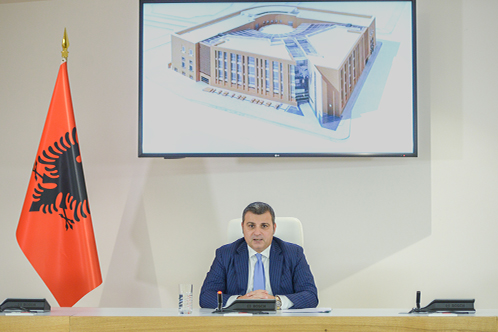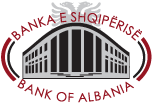BANK OF ALBANIA
Press Release
Governor Sejko: Statement to the Press Conference on Monetary Policy Decision, 16 December 2020
Publication date: 16.12.2020
Dear Ladies and Gentlemen,
Welcome to the last press conference for 2020.
The year 2020 was a rough one in all respects, in relation to health, economics and social concerns. The coronavirus (COVID-19) pandemic has caused a sharp contraction in economic activity, an increase in unemployment, financial difficulties for enterprises and households, and produced weak inflationary pressures. In light of these developments, the main objective of economic policies has been alleviating the fiscal burdens of enterprises and households, preserving monetary and financial stability, and establishing necessary premises for economic recovery.

The Bank of Albania undertook a complete package of measures to address the situation.
- We eased our monetary policy and increased liquidity injections aiming at: smooth functioning of the financial market; easing of debt cost; increasing lending; and bolstering consumption and investments.
- Also, we temporarily eased regulations on the functioning of the banking sector, by encouraging a short-term loan repayment deferral and its restructuring. These measures drove to a moratorium of above 40% of bank credit portfolio, by alleviating the financial burden on enterprises and households facing temporary difficulties. Also, more than 25,000 bank clients benefitted from credit restructuring, thus enhancing the resilience of their long-term business-plans.
- In parallel with them, we have frozen the dividend payments in the banking sector during 2020, in order to strengthen the capital and stability of this sector.
- Finally, we forfeited fees on the use of electronic payment systems' infrastructure, aiming at expanding the use of these instruments.
The Supervisory Council considers these measures to have been successful. Both monetary and financial stability have been preserved, while the banking sector has continued to lend enterprises and households, thus avoiding massive bankruptcy and mitigating an increase in unemployment.
[Let me now present the key messages of the Intermediate Monetary Policy Report and the decisions taken by the Supervisory Council in today meeting. ]
The new information analysed in this Report has shown results which are close to our expectations. Recent news about progress on vaccines offers hope for an end to the pandemic and the return to normality in 2021. These developments enhance the outlook for a gradual but continued economic recovery over the medium-term horizon. However, the epidemiologic situation continues to pose challenges to economic performance in the short run.
Against this backdrop, the Supervisory Council has assessed that the current monetary policy stance is adequate both for underpinning economic growth and for enabling inflation to converge to target.
In the following, I will present in greater detail the conclusions of this analysis, monetary policy decisions and the underlying reasons for these decisions.
***
Inflation of consumption prices averaged 1.8% in October and November, upwards from an average of 1.4% in the third quarter. In recent months, inflation was mostly affected by supply-side factors, which also caused volatility in food prices. On the other side, inflationary pressures, arising from both aggregate demand and the external environment, continue to remain low.
The Albanian economy has recorded a return towards recovery, in the third quarter. However, economic activity in Albania remains below potential levels, while recovery is expected to take place gradually and is surrounded by risks.
The available indicators improved during the summer months, reflecting containment of epidemic spread, relaxing of social distancing measures, and the positive effect of easing monetary, fiscal and financial measures. In response to these measures, the performance of budget revenues and that of foreign trade have been improving. The labour marked also improved, as shown by the quarterly increase of employment and the reduction to 11.6% of the unemployment rate.
Available data for the fourth quarter are still preliminary. Nevertheless, resurgence of the pandemic and partial implementation of restrictions in the fourth quarter suggest a slower recovery of economic activity in this period. This assessment is based on a fall in business confidence and reflects the fragility of economic developments in the short run.
The easing measures undertaken by the Bank of Albania have established calm financial markets, stimulating monetary conditions for bolstering economic activity. In particular, interest rates applied to enterprises and households have stood at low levels, the exchange rate has been stable, while the banking sector has kept lending to the economy. The annual growth of credit to the private sector averaged 6.7% during 2020, mainly supported by the expansion of credit to enterprises and the increase of credit in lek. In parallel with the growth in credit portfolio, its structure performed positively as well. The 50.2% increase of the share of loans in lek to total loans provides encouraging signals for the enhancement of monetary policy effectiveness and the stable financial growth of Albania.
The banking sector provided a positive contribution in dealing with the crisis. An increase in lending provided liquidity to enterprises and households facing temporary difficulties, and supported the continuation of investments. In addition, the short-term moratorium on credit instalment to certain categories of borrowers and credit restructuring to other categories have shifted part of the crisis’ financial burden to the balance sheets of this sector.
In the baseline scenario, the Bank of Albania expects inflation to gradually increase towards the target in the medium-term horizon. This forecast factors in expectations for progressive growth in economic activity, in Albania and globally. Growth of aggregate demand will be accompanied by an increase in employment, wages and production costs. In parallel with an increase in imported inflationary pressures, inflation is expected to trend upwards and to converge to target within 2022.
Realisation of this scenario of developments is conditioned by the rapid end of the pandemic, the recovery speed in consumption and investments in Albania, and globally, as well as by the maintenance of a calm and appropriate financial environment. Realisation of this scenario also needs to be supported by stimulating macroeconomic policies.
The Bank of Albania notes that the current economic policy mix remains appropriate. Maintenance of an accommodative monetary policy stance is crucial for boosting lending to the economy at low cost. At the same time, gradual reduction of fiscal stimulus - projected in the 2021 Budget and in the medium-term draft budgets - balances the need to prompt aggregate demand with the need to strengthen the stability of public debt in both medium and long terms.
***
Based on these projections and considerations, the Supervisory Council of the Bank of Albania continues to consider the current monetary policy stance to be adequate. In this view, the Supervisory Council decided to:
- Keep the policy rate unchanged, at 0.5%;
- Keep the overnight deposit and overnight lending rates, unchanged at 0.1% and 0.9%, respectively.
The monetary policy stance will continue to remain accommodative throughout the forecast horizon, in order to provide favourable financing conditions for growth of the economy and for the return of inflation to target.
In addition, the Bank of Albania will continue to maintain the current form of liquidity injection operations. This form guarantees the unlimited injection of liquidity quantity, until the end of the first quarter of the next year.
Last, the Supervisory Council finds that the expected macroeconomic developments are surrounded by uncertainties and exposed to downside risks: In particular, downside risks arise from:
- The worsening epidemiological situation and its deeper impact on the economy;
- The damage size of production capacities and the possibility for a slower recovery of both domestic and foreign demand;
- Problems arising in the monetary policy transmission mechanism, in the form of: increased interest rates and financing costs to the private sector; slower credit supply growth; strong fluctuations of other indicators in the financial market.
The Supervisory Council assesses that the materialization of these risks would require further easing of monetary policy stance.

 Linkedin
Linkedin
 Twitter
Twitter
 Youtube
Youtube
 Facebook
Facebook
 Flickr
Flickr
 RSS
RSS
 Subscribe
Subscribe
 Feedback
Feedback